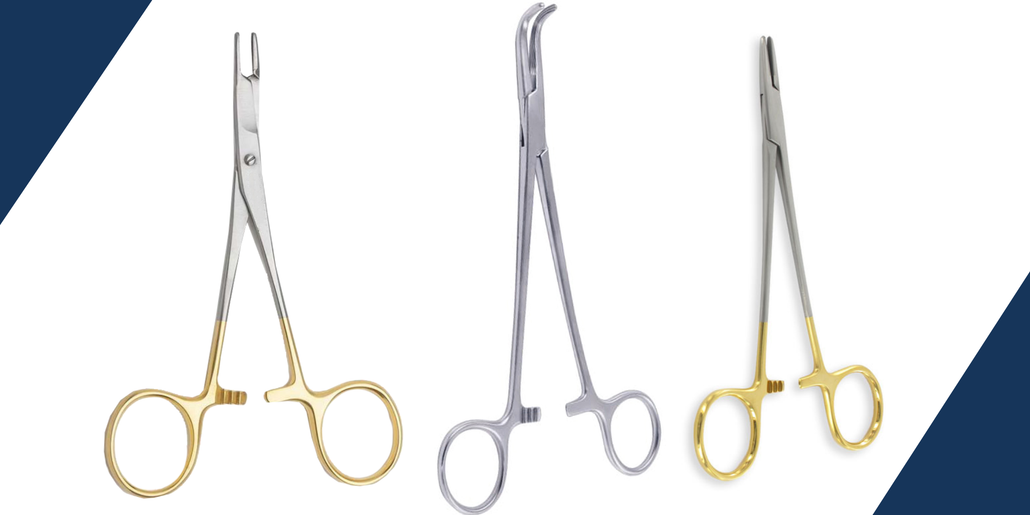
Difference between a needle holder and a hemostat?
Posted on 14th Apr 2022
Doctors typically use a needle holder and medical forceps during surgery. Although these two tools are commonly used by doctors, the average person is unaware of their existence. This article will explain the functions of these two tools as well as their differences.
Needle Holders
A needle holder is another instrument used in surgical procedures. Its primary function is to secure the needle used to suture the wound. The shape of the needle holder is similar to that of the forceps, but the front jaws of the two tools are different. In most cases, the needle holder is made of corrosion-resistant, high-strength, high-quality stainless steel. Surgeons use needle holders to keep surgical needles in place while sewing the patient’s tissue. Because surgical needles come in a variety of shapes and sizes, doctors employ a variety of needle holders. Surgical expert will select a needle holder with a small jaw when using a small surgical needle, they will also use a needle holder with a relatively large diameter when using a thicker surgical needle.
Hemostatic Forceps
Ring forceps, also known as hemostatic forceps, are hinged and resemble ring scissors. Hemostatic forceps frequently have a locking mechanism known as a ratchet that is used for clamping, with each ratchet increment, the jaws of the locking forceps gradually come together. Locking hemostatic forceps, also known as clamps, are used to securely hold tissue. They are known as hemostats when they are used to control blood flow.
Hemostats are typically used to obstruct the flow of blood or fluids by compressing blood vessels or other tubular structures. Ring forceps are used for grasping, firmly holding, or pulling on objects. Ring handles with a locking ratchet are generally preferred over thumb forceps for particularly delicate operations.
Difference between forceps & needle holders
Straight and curved forceps are common. Some forceps have teeth as well. The forceps with teeth not only do not obstruct blood flow, but they also do not harm the blood vessels. This type of forceps is commonly used to clamp arterial vessels.
The needle holder’s function is to hold the surgical needle so that doctors can sew the patient’s wound. The needle holder has a shorter head than the forceps and shallow teeth. The needle holder can accommodate both thick and thin surgical needles. The needle holder has a groove for holding the thick surgical needle, which is used to increase the stability of the clamping surgical needle and prevent it from falling off.
Surgipro is providing German stainless Steel Surgical Instruments and has top professionals from the surgical instruments’ field who started this business over 30 years ago. We only supply the highest quality German stainless steel instruments that have been expertly crafted. This means we can stand by our word when we say our surgical tools come with a lifetime warranty and offer free shipping on purchases over $100.
